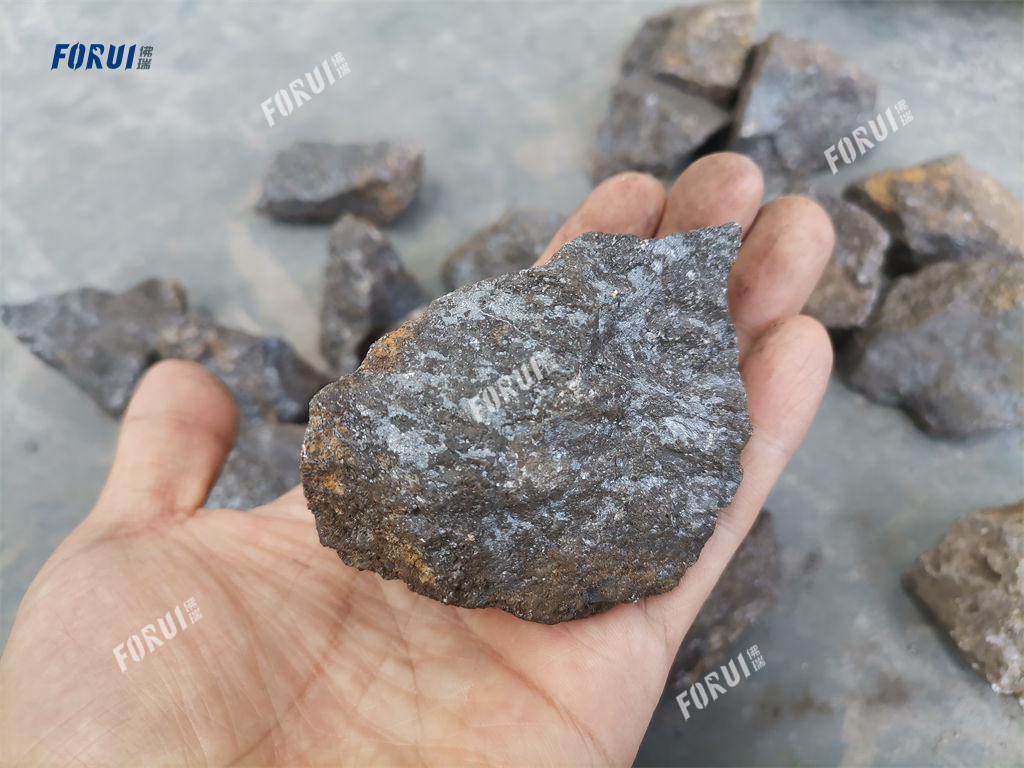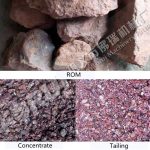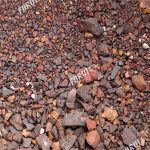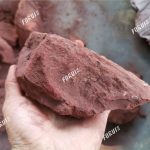
The oxidation degree of magnetite determines the magnetic strength of magnetite. The higher the oxidation degree of magnetite, the lower the magnetism. After the magnetite is oxidized, it can partially or completely become semi-false hematite or false hematite, that is, the crystal shape of the mineral is still magnetite, and the chemical composition has become hematite. The degree of oxidation of magnetite is essentially the process from divalent iron to trivalent iron. Because the chemical formula of magnetite is Fe3O4, which includes divalent iron and trivalent iron, the higher the degree of oxidation of magnetite, the greater the content of trivalent iron.
When magnetite is completely oxidized, it will all turn into false hematite, and its constituent formula is Fe2O3. Whether it is semi-pseudo-hematite or pseudo-hematite, its magnetic properties are lower than that of magnetite. Therefore, as the oxidation process of magnetite increases, the magnetic properties of the mineral will gradually weaken. It can be seen that the content of FeO and ferric iron in the ore can reflect the magnetic properties of the iron ore.
Through chemical analysis, the FeO content and the total iron (TFe) content in the ore can be obtained, and this percentage value is used to indicate the oxidation degree and magnetic properties of the ore. This percentage is usually called the magnetic rate, namely:
Note:
FeO —— the content of ferrous oxide in the ore
TFe —— the content of total iron in the ore
For pure magnetite:
If oxidation occurs, the magnetic rate of the ore must be lower than 43.0%. In the practice of beneficiation, the following methods are generally used to distinguish between magnetite and non-magnetite:
- Magnetic Rate> 36%: Magnetite, or unoxidized ore.
- 28% < Magnetic Rate <= 36%: semi-pseudo hematite, or semi-oxidized ore.
- Magnetic Rate <= 28%: False hematite, or oxidized ore.
When using the magnetic rate to reflect the magnetic properties of iron ore, special attention should be paid to the influence of its divalent iron minerals. For example, when iron ore contains more iron silicate, the calculated magnetic rate will be higher, sometimes even greater than that of pure magnetite. In fact, iron silicate is a weakly magnetic ore. Therefore, when judging the magnetic properties of iron minerals by the magnetic rate, we must first know the chemical composition of the iron-containing minerals in the ore, and then consider the application of the magnetic rate.
Gongyi Forui Machinery Factory is a high-quality enterprise specializing in the production of beneficiation equipment. Over the years, it has produced gravity beneficiation, magnetic separation, flotation, and other beneficiation equipment, and has accumulated a lot of practical experience. Forui Machinery is involved in lead-zinc ore, gold ore, fluorite, barite, pyrite, hematite, limonite, magnetite, manganese ore, antimony ore, tungsten ore, tin ore, celestite, etc. In the field of beneficiation of a variety of minerals, fruitful results have been achieved.
If you need equipment quotation and process flow, please feel free to Contact Us




